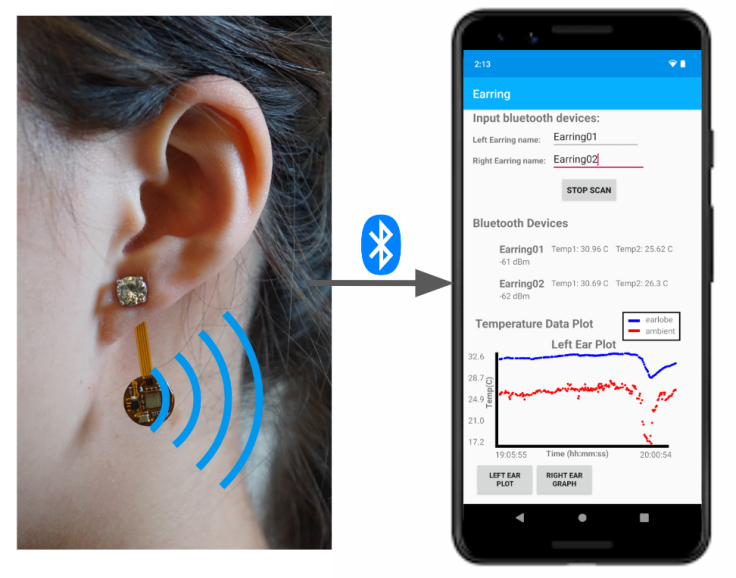Thermal Earring To Monitor Temperature: Experts Say It Could Also Track Ovulation And Stress

Researchers have developed smart earrings that could continuously monitor a person's earlobe temperature. The innovation, known as Thermal Earring, could also be potentially used to track signs of ovulation, stress, eating, and exercise.
The University of Washington researchers developed a prototype of the smart earring around the size and weight of a small paperclip, with a 28-day battery life. The earring is designed so that one temperature sensor gets attached to the wearer's ear, while another sensor hangs about an inch below to measure the room temperature. The earrings could be personalized with fashion designs using resin or a gemstone without compromising accuracy.
"I wear a smartwatch to track my personal health, but I've found that a lot of people think smartwatches are unfashionable or bulky and uncomfortable," said co-lead author Qiuyue (Shirley) Xue. "I also like to wear earrings, so we started thinking about what unique things we can get from the earlobe. We found that sensing the skin temperature on the lobe, instead of a hand or wrist, was much more accurate. It also gave us the option to have part of the sensor dangle to separate ambient room temperature from skin temperature."
However, the challenge ahead for the team was to develop a wearable that needed to be compact enough to resemble an earring, yet durable enough for users to recharge it only every few days.
"It's a tricky balance. Typically, if you want power to last longer, you should have a bigger battery. But then you sacrifice size. Making it wireless also demands more energy," said co-lead author, Yujia (Nancy) Liu.
By integrating a Bluetooth chip, a battery, two temperature sensors, and an antenna, the team optimized the earring's power consumption while ensuring efficiency. Instead of traditional pairing with a device that tends to consume more power, the earring uses Bluetooth advertising mode to transmit data without establishing a direct connection. After reading and transmitting temperature, it enters a deep sleep mode to conserve power.
"Because continuous earlobe temperature has not been studied widely, the team also explored potential applications to guide future research. In five patients with fevers, the average earlobe temperature rose 10.62 degrees Fahrenheit (5.92 degrees Celsius) compared with the temperatures of 20 healthy patients, suggesting the earring's potential for continuous fever monitoring," the news release said.
"In medicine we often monitor fevers to assess response to therapy -- to see, for instance, if an antibiotic is working on an infection. Longer term monitoring is a way to increase sensitivity of capturing fevers, since they can rise and fall throughout the day," said co-author Dr. Mastafa Springston.
Although people's core body temperature stays relatively constant when they do not have a fever, earlobe temperature varies more, which gives thermal earrings potential use in tracking other functions. Using a small proof-of-concept test, researchers found that the earrings could detect temperature variations that correlated with eating, exercising, and experiencing stress.
"Current wearables like Apple Watch and Fitbit have temperature sensors, but they provide only an average temperature for the day, and their temperature readings from wrists and hands are too noisy to track ovulation. So we wanted to explore unique applications for the earring, especially applications that might be attractive to women and anyone who cares about fashion," Xue said.
However, the researchers need more data and testing to confirm their findings. Thermal earrings are not currently commercially available.



























